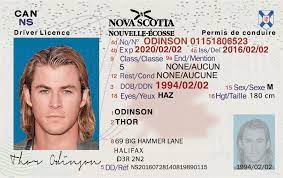Your Nova Scotia Driving License, Navigating the process of obtaining and maintaining a driving license can seem daunting, especially in a province like Nova Scotia. This beautiful region, known for its picturesque landscapes and vibrant culture, requires that drivers meet specific criteria to ensure safety on the roads. In this blog post, we’ll explore the steps to obtain a Nova Scotia driving license, the types of licenses available, and tips for maintaining your driving privileges.
Types of Nova Scotia Driving Licenses
Nova Scotia offers several types of driving licenses based on the vehicle you intend to operate:
- Class 1 License: For operating tractor-trailers and other large vehicles.
- Class 2 License: For driving buses or other vehicles designed to carry more than 24 passengers.
- Class 3 License: For driving heavy trucks and other vehicles.
- Class 4 License: For operating taxis or other vehicles designed to carry passengers.
- Class 5 License: The most common license, which allows you to drive standard passenger vehicles.
- Learner’s License (Class 7): A permit for novice drivers that allows them to practice under certain conditions.
Steps to Obtain a Nova Scotia Driving License
1. Understand the Licensing Stages
Nova Scotia follows a graduated licensing system, which consists of three stages:
- Learner’s Stage (Class 7): Obtain a Class 7 license by passing a written knowledge test. This license allows you to practice driving with a fully licensed driver.
- Novice Stage (Class 5): After holding a Class 7 license for at least 12 months (or 9 months with driver education), you can take the road test to obtain a Class 5 Novice license, which comes with certain restrictions.
- Full License: After holding a Class 5 Novice license for a minimum of 24 months and passing the road test, you can obtain a full Class 5 license with no restrictions.
2. Prepare for the Knowledge Test
To obtain your Class 7 learner’s license, you must pass a knowledge test covering the rules of the road, road signs, and safe driving practices. You can study using the Nova Scotia Driver’s Handbook, available online or at your local Access Nova Scotia center.
3. Take the Knowledge Test
Visit your nearest Access Nova Scotia center to take the knowledge test. You will need to bring:
- Proof of identity (e.g., passport, birth certificate)
- Payment for the test fee
4. Obtain Your Learner’s License
Upon passing the knowledge test, you will be issued a Class 7 learner’s license, allowing you to practice driving under the supervision of a fully licensed driver.
5. Gain Driving Experience
As a learner, you must complete a minimum of 60 hours of supervised driving practice, including at least 10 hours of nighttime driving. Keep a log of your practice hours, as this may be required for the next stage.
6. Take the Road Test
After holding your Class 7 license for the required period and completing your practice hours, you can book a road test for your Class 5 Novice license. To prepare for the test:
- Practice driving in various conditions (highways, city driving, etc.)
- Familiarize yourself with the vehicle you’ll use for the test.
7. Obtain Your Novice License
If you pass the road test, you will receive a Class 5 Novice license. Remember that this license comes with certain restrictions, such as:
- A zero blood alcohol concentration (BAC) while driving.
- No driving between midnight and 5 a.m. unless accompanied by a fully licensed driver.
8. Progress to a Full License
After holding your Class 5 Novice license for at least 24 months, you can take a second road test to obtain your full Class 5 license, which has no restrictions.
Maintaining Your Nova Scotia Driving License
1. Renewal and Fees
Your Nova Scotia driving license must be renewed every five years. Make sure to keep track of your expiration date and visit your local Access Nova Scotia center to renew your license in a timely manner.
2. Stay Informed of Changes
Keep yourself updated on any changes to driving laws and regulations in Nova Scotia. This can help you avoid fines and ensure safe driving practices.
3. Keep Your Driving Record Clean
Avoid accumulating demerit points on your driving record. Safe driving not only helps you maintain your license but also contributes to safer roads for everyone.
4. Address Changes
If you change your address, it’s essential to update your information with Access Nova Scotia within 30 days to ensure that your license reflects your current address.
Conclusion
Obtaining and maintaining a Nova Scotia driving license is an essential part of enjoying the freedom of the open road in this stunning province. By understanding the licensing stages, preparing for the necessary tests, and staying informed about regulations, you can navigate the process smoothly and become a responsible driver. Remember that safe driving practices not only protect you but also contribute to the safety of all road users. If you have any questions or need assistance, don’t hesitate to reach out to Access Nova Scotia or consult their website for more information. Safe travels!
you might also like these:
